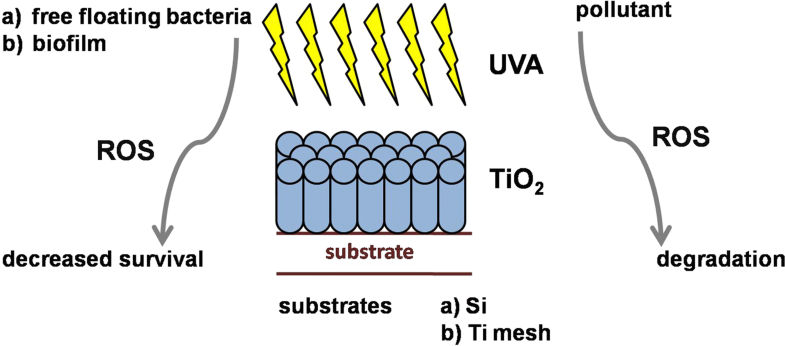UV light-induced photocatalytic, antimicrobial, and antibiofilm performance of anodic TiO2 nanotube layers prepared on titanium mesh and Ti sputtered on siliconMartin Motola, Ewa Dworniczek, Leonid Satrapinskyy, Grzegorz Chodaczek, Jakub Grzesiak, Maroš Gregor, Tomáš Plecenik, Joanna Nowicka, and Gustav Plesch Comenius University in Bratislava, Faculty of Natural Sciences, Bratislava, Slovakia
E-mail: martinmotola@gmail.com Abstract: The potential use of TiO2 nanotube layers as a self-sterilizing and self-cleaning material for environmental application is presented. Antimicrobial, antibiofilm and photocatalytic performance of anodic TiO2 nanotube layers under UV irradiation was investigated on titanium mesh and on Ti sputtered on silicon substrates. The nanotubes were prepared in fluoride containing ethylene glycol-based electrolyte to obtain ~ 4 µm thick nanotube layers, which were subsequently annealed at 450 °C. Structural and morphological properties of prepared TiO2 layers were characterized using X-ray diffraction, scanning electron microscopy and atomic force microscopy. In addition, their surface wettability, before and after UV irradiation, was investigated. Their photoactivity was compared to TiO2 sol–gel films of similar thickness. The highest efficiency in photocatalytic degradation of organic dye and removal of free-floating bacteria of Gram-positive Staphylococcus epidermidis was observed for TiO2 nanotube layers on titanium mesh. The highest antibiofilm performance in impairments of biofilms was reached using the TiO2 nanotubes on silicon. The obtained results on silicon substrate are promising for the development of medical devices covered by TiO2 nanotubes that would decrease the risk of infection. On the other hand, the mesh substrate covered by TiO2 nanotubes could find environmental applications such as filters in flowing photocatalytic reactors. Keywords: TiO2 ; Nanotubes ; Photocatalytic ; Antimicrobial ; Antibiofilm Full paper is available at www.springerlink.com. DOI: 10.1007/s11696-018-0667-4
Chemical Papers 73 (5) 1163–1172 (2019) |
Monday, May 19, 2025 |
|||
© 2025 Chemical Papers |
||||






